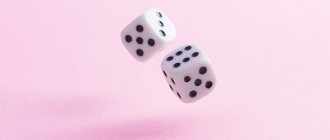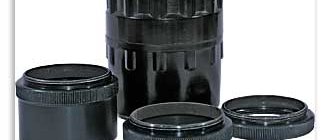Who among us has not dreamed of holding an old book or map in our hands, or receiving a letter from the past? It would seem that this is quite problematic, because antique books are expensive, and letters are not kept for so long.
But what if you try to make a book or piece of paper, a letter, a map or a postcard visually older yourself? It's so simple!
Let's talk to you about how to age paper with and without text, and in what cases you may need this skill.
Decor using paper
First of all, let's consider this question: why do we need aged paper at all and what can and should it be used for?
First of all, it is needed for the design of various crafts: postcards, photo albums, invitation leaflets. It can also be used to create original albums, writing sheets, thus showing your originality.
Agree, an “antique” book, a vintage postcard or just a sheet of parchment with a drawing or map will delight any person, no matter how old he is and no matter what his hobby is. Let's talk about how to make aged paper at home without resorting to outside help and without spending a lot of money on it.
Why make paper at home?
Paper production began more than two thousand years ago in China. Before this, important information was recorded on other materials:
Before the advent of paper, notes were made on stones.
- stone;
- clay tablets;
- parchment;
- tree bark;
- papyrus.
In some countries, paper-like material was produced from silk, bamboo or hemp. However, the result left much to be desired: the material was very expensive and fragile. The Minister of Agriculture, Tsai Lun, was the first to produce durable and high-quality paper. He carried out many experiments until he had a material on which he could write.
Nowadays, paper is produced on a huge scale, which cannot but affect the condition of forests. Using recycled materials will help keep the environment cleaner, because our planet needs trees to produce oxygen.
Modern paper making machine
And handmade paper will be especially appreciated among handmade lovers. Such a thing can be painted in different colors, dried flower petals or seeds can be added to it. In addition, the material can be given an interesting texture using lace, crumpled newspapers and other materials.
The right approach, skillful hands and imagination will help you make designer paper that can be successfully used to create original cards, creative crafts and paper panels. You can also draw and create sketches on it that will look very unusual and attractive.
Treating paper with tea
First, let's talk about how to change a sheet of paper using various liquids. Let's start with one of the most famous methods, that is, we will discuss how to age paper with tea. This is the simplest and most accessible method for everyone.
In order to age paper using tea, you will need strong brewed tea at the rate of 5-10 teaspoons of tea leaves per glass of water (if tea is in bags, then three bags of tea leaves will be enough). The tea should be brewed for 10 minutes, then it must be strained.
Having poured the finished tea into a small bath, soak the sheet of paper you need in it (you can crumple it first, so that the paper is better saturated with water, and also in order to give it an older and shabby look), let it sit for a couple of minutes. Then we take it out of the water and wait for the sheet to dry. Finally, iron it with an iron, leveling the surface of the sheet.
Homemade reed paper production
You can make excellent paper with your own hands from ordinary reed. It is convenient to paint with gouache and watercolor on it, so reed paper can be a suitable material for postcards, crafts and unusual sketches.
To make paper, you need to collect the reed, wash it, and grind it thoroughly. After this, the raw materials must be placed in a pan, filled with clean water and brought to a boil. Then take 100 grams of alkali and dilute it in a glass of water, the mixture is added to the boiling cane mass.
After 30 minutes, the pan can be removed from the heat and the water drained. The cane is carefully sorted, all hard fibers must be removed and the rest crushed using a blender or food processor. A few tablespoons of brewed starch will help make the mixture more homogeneous.
The mixture is whipped again until smooth, reminiscent of porridge in consistency. The mass must be carefully scooped out with a frame. The mixture is distributed as evenly as possible throughout the frame. After this, you need to remove excess moisture from it using a sponge or old newspapers. The mass is then transferred to fabric and dried for several days.
Let's resort to coffee
Now let's talk about how to age coffee paper. This method of aging is not much different from the previous one. The difference is in the brew itself. For a glass of water you need 5 teaspoons of natural ground coffee. Brewed coffee should be steeped for 10 minutes, then strained. At the same time, sediment should not get into your bath in which you age the paper. Otherwise, streaks and marks may remain on the paper. In some cases, the sediment can be used to create scuff marks and brighter small spots on a piece of paper.
The time for which a sheet of paper should be immersed in the solution is no more than five minutes, otherwise the sheet will get wet and tear when trying to remove it. In addition, we do not recommend that you put several sheets of paper together in the tray, otherwise they will bunch up into one soggy piece of paper and tear.
The sheet of paper should also be dried on a flat surface, and after drying it is ironed using an iron.
If you don’t have natural coffee at home, you can replace it with instant coffee.
Coffee method
Here's another fairly simple way to make antique paper. This time you will need coffee. The difference between tea and coffee coloring of paper is that in the first case the leaf color is yellow. And with the help of coffee - in gray-beige. Therefore, when choosing a method for painting paper, determine what result you are still expecting.
Prepare everything you need: 6 tsp. ground coffee without a slide, 200 ml of boiling water, basin, paper.
1. As in the previous method, remember the paper with your hands.
2. Pour boiling water over the coffee to brew. Now cover the cup with a lid and let it brew for 10-15 minutes. After removing the lid, strain the coffee and leave again for a while. This is necessary so that the sediment settles to the bottom.
3. Pour strong coffee into a basin and lower a piece of paper. It should be noted that in this case it is better to give preference to thicker paper. Because when soaking, there is a possibility that the thin one will begin to tear. Leave the leaf in the bowl for no more than 5 minutes. Otherwise, if you soak it longer, you won’t be able to pull it out entirely.
4. If desired, make drips from the remaining coffee in the bowl. Place the sheet on a surface to dry. After this, iron through the fabric.
Using milk
Now let's talk about how to age paper using milk. To do this, you will need milk with a high percentage of fat content. It’s better if it’s completely homemade. You should also find a brush to apply it with.
We crumple the sheet of paper, then use a brush to thoroughly paint it with milk on both sides. After it is well soaked on both sides, lay it out on a flat surface. Leave it for a while to dry. Then iron the sheet using an iron. In this case, the temperature should be high enough, and dark brown spots should appear on the paper itself.
In addition, you can also dry a sheet of paper in a microwave oven or using a hair dryer. The main thing in this aging method is the effect of high temperature on the solution itself, with which the sheet of paper is impregnated.
Lemon juice
Let's say a few words about how to age paper using lemon juice. This is another quite interesting method and probably known to many. So, aging paper using lemon juice. If you were into detective stories as a child, then you probably know that many criminals and even detectives wrote their secret notes using lemon juice. In this case, the inscription appeared only under the influence of high temperatures.
To age paper using lemon juice, you will need the sheet of paper itself, lemon juice, and a hair dryer. A hair dryer can replace a microwave or a hot iron.
Squeeze the juice from the lemon. Then we apply it to a sheet of paper using a sponge, brush, or simply dipping it in a container with lemon juice. Then you should place the sheet on a flat surface and dry it with a hair dryer. As it dries and is exposed to heat, it will begin to darken.
Now you also know how to artificially age paper using lemon juice.
Alternatively, this method can be used for additional leaf decoration. So, you can make inscriptions on a sheet of paper using lemon juice, and then develop them. This is a rather original way to decorate cards and albums.
How to fold paper
Another interesting point in coloring paper. It turns out that with different methods of folding paper dipped in solutions, the result is different. A crumpled leaf dropped into a basin in the same form is obtained with contrasting spots. A sheet folded in four will acquire soft color transitions. And if you decide to color a stack of paper at once, stacking it on top of each other, you can expect fairly bright edges and a lighter center of the paper.
Thus, you can age not only blank white sheets of paper, but also black and white pictures printed on a printer. In this case, you will receive a real vintage postcard, signed on the back side which you can present to your loved one. Also, quite often, paper aging is done by those people who need to make certificates of honor in a vintage style.
Aging paper using potassium permanganate
If you have potassium permanganate (that is, just potassium permanganate) at home, then it will be quite easy for you to age any paper. To do this, you need to pour several granules of potassium permanganate into the container in which you are going to paint the sheet, then dilute it in cold water until completely dissolved. In this case, the solution should be a rich dark pink color. When working with the solution, be sure to wear gloves so as not to stain or burn your hands.
After this, dip the paper in water for five minutes. When it is sufficiently saturated with water, take it out of the container and lay it out to dry.
After drying, the paper acquires a pleasant brown tint. Now you also know how to age paper using potassium permanganate. As you can see, this is a rather interesting and simple method. In addition, with the help of potassium permanganate you can artificially age fabric items.
Production of baking parchment
Baking parchment is used by housewives in cases where it is necessary to prevent baked goods from burning and sticking to the pan. For those who love to pamper loved ones with cakes, pastries and pies, baking parchment becomes an indispensable tool in the kitchen.
Unfortunately, sometimes this useful tool is not at hand exactly at the moment when it is needed most. Don't forget that you can make baking paper with your own hands.
It is recommended to use clean paper that has no ink on it. This could be unwritten notebook sheets or unused printer paper.
To make baking paper with your own hands, you need to grease clean sheets with vegetable oil, sunflower or olive oil. After this, you need to line a baking sheet or baking dish with the resulting material.
Aging paper using a candle
Now let's move on to thermal methods of aging paper. First of all, let's talk about how to change the age of paper using fire.
The simplest and most likely known to many method is to use fire to age the paper and give it the appearance of something that has survived a fire.
For this you need a candle. In this case, you will have to age the paper over a sink, so that in case of fire, you can quickly extinguish it and prevent a fire.
We place the candle in the candlestick and then place it in the sink. After this, light the candle. We take the sheet of paper you need in our hands and begin to carefully move it over the candles. In this case, there should be a distance of at least 10 cm between the paper and the fire. The paper should not be held in one place. So you can set it on fire.
How to make paper with your own hands
It’s rare that creative people limit themselves to just one type of handicraft: as a rule, we want to try more and more new types of handicraft. And every beadworker should know how to make paper: imagine what a sensation you will make if you use handmade paper as a backing for your jewelry! This paper can also be used as a postcard: its texture is unique, and there is no way in the world that will allow you to make 2 identical sheets.
So, for work you will need:
- Blender
- Water container: basin, pan or tray. I bought myself a litter box from a pet store, usually used as a cat litter box.
- Frame and mesh (details below) - should be about 10 cm smaller than the water container on each side: you should be able to easily immerse them in a container of water by holding the sides with your hands.
- Several foam sponges for washing dishes
- Several pieces of fabric that absorbs water very well. I used sheets of felt, and then found in the kitchen household napkins, which are usually used for wiping surfaces (sold in hardware departments under the brands “Cinderella” and “Chistulya”). They were perfect for making paper!
- Paper: cardboard boxes from once gifted perfumes, cardboard packaging for eggs, printer paper, napkins, wrapping paper.. Almost any will do! It is not recommended to use glossy magazines and newspapers, as there is too much printing ink.
- All kinds of inclusions: leaves, grass, threads, wool, glitter, confetti - to decorate the paper and give it a unique flavor.
Pour some water into the blender and put the paper in it, after tearing it into small pieces. I added a few pieces of white cardstock and a few pieces of orange construction paper for color. Paper can be colored in several ways: by mixing white sheets with colored ones, and also by infusing it in onion peels, tea and other natural dyes.
Now cover your ears and turn on the blender... We need to bring the source material to a pulp state: as a rule, this takes about a minute. Here you can go two ways: shred the paper until smooth or stop halfway, as I did. Look at the mixture in the blender and the photo of the finished paper: you can see bright orange inclusions there. This is under-shredded orange paper.
Pour the resulting mass into a container with warm water. At the same stage, add inclusions to the basin: confetti, threads... whatever you see fit!
Now it’s the turn of the main tools, without which the process of making paper is practically impossible: a grid and a frame. I had two frames, one of which had a fine mesh stretched over it. The mesh is needed to retain paper particles and allow water to pass through. A frame without a grid is needed to give the sheets of paper a rectangular shape. They need to be used as shown in the photo: the frame with the mesh is located at the bottom, the mesh up. A frame without a mesh is placed on top.
Align the sides of the two frames, grab them with both hands (the mesh is facing you, the frame is on top), and immerse them in the basin as shown in the photo below. First vertically.
Then carefully move the frame and mesh to a horizontal position, lowering it under water. In the photo, I'm holding the frame and grid with one hand only because I'm taking the photo with the other. I usually hold them with both hands.
Remove the frame and mesh from the basin strictly vertically. There will be a damp paper pulp on top of the mesh. Let the water drain (about a minute), then take a sponge and start blotting from the underside: where the wet paper pulp is separated from the sponge by a mesh. Wring out the sponge (or change it) 2-3 times.
Now carefully remove the frame from the mesh. We have a rectangle of wet paper pulp on the grid. Set it aside and prepare an area where your paper will dry.
I did this on the windowsill - it’s good that its width allows. So, place a plastic bag on a flat surface that is not afraid of moisture, and several sheets of newspaper on top of it. Wet and lightly wring out a piece of absorbent fabric and place it on top of the newspapers. It is very important that the fabric is damp and has a non-woven structure. Now take the mesh on which the wet paper rests and place its wide edge against the damp non-woven material (laundry napkin) so that the mesh is on the bottom and the paper is on top. In one quick, gentle motion, flip the net over.
Now the paper pulp lies on a damp cloth, with a mesh covering it on top. Take a sponge and begin to blot the mesh, removing excess moisture from the paper pulp:
Squeeze (or change) the sponge thoroughly several times. At this stage we must remove as much moisture as possible from the mesh side. When there is little water left on the sponge after blotting, slightly lift the narrow edge of the mesh and look under it: if the paper does not stick to the fabric and rises with the mesh, continue to remove excess water with the sponge. If the paper separates from the mesh and remains stuck to the fabric, great, that's what we need. Carefully remove the mesh, leaving the paper on the fabric. At this stage, not everything can go smoothly - practice and experience are needed here. A couple of times my sheet of paper tore until I realized that it is very important that the “receiving” fabric is wet: then the paper pulp will stick to it more easily and come off the mesh.
If you want to make one sheet of paper, you can leave it to dry directly on the mesh or fabric. If you want to make several sheets in one session, cover the still wet sheet of paper with the next layer of damp non-woven material, and repeat the procedure from the very beginning. Place the next sheet on top of the previous one, lay wet household wipes between them.
When you run out of felt sheets and household napkins (or when you run out of strength and desire to continue), place the last piece of felt material on top of the resulting multi-layer structure (this time you can take a dry one), you can put a towel on top, then some newspapers, a plastic bag , and weigh it down with a piece of wood or a thick art book - if anything happens, the bag will save it! Place the heaviest dumbbells on top, and leave your sheets for a day or three under this press. Once a day, it is advisable to disassemble the structure and ventilate it so that nothing becomes rotten or moldy in the moisture. On summer days, the paper will dry faster than on rainy autumn days. Proximity to heating appliances is also important: my drying structure lay on the windowsill directly above the central heating radiator, which accelerated its drying. When the paper dries, dry it a little in the open air, and again put it under the press for several days.
As an option: if the mesh and frame used above seemed to you to be too complex or difficult to access, you can use improvised materials that every housewife has: an embroidery hoop and a mosquito net, or in general, just a mosquito net.
In this case, the sheets are round and more textured, due to the large size of the mosquito net cells. If you use only the mesh, the paper pulp will float away, and the sheets will turn out shapeless and thinner at the edges. I used this design before I got the grid and frame, and, most likely, I will never use it again - compared to a rectangular grid and frame, it is very inconvenient!
Good luck!
Microwave oven as a means for aging paper
As you know, paper darkens when exposed to heat. Heat can be emitted either by fire or by a device powered by electricity - a hairdryer, stove, even an electric fireplace. But let’s talk about something that is probably in every home - a microwave.
One of the easiest ways to age paper is to temporarily place it in a microwave oven at a temperature of 200 degrees Celsius. In this case, the paper itself should be pre-moistened in water or a solution of tea (coffee).
Alternatively, you can place the paper in the refrigerator first and then in the microwave. This way you can also age the paper for several years. Now you know how to age paper in the microwave.
Aging with the sun
Well, those who want to add age to paper in the most natural and simple way possible, without resorting to fire or electrical appliances, or various tinctures, should use the help of the sun.
On hot summer days, you can use the simplest method for aging paper - solar. To do this, you need to put a sheet of paper or even hang it so that sunlight falls on it all the time. In a few days it will be ready. But you should age the paper in advance in this way.
conclusions
There are many ways to age a sheet of paper. We have discussed only the most famous and used of them. All of these methods work equally, although the appearance of the paper may differ.
If you are in doubt which method to choose, experiment with each of them and compare the results. Remember that the appearance of aged paper largely depends on how strong the solution you treated it with, as well as how strong and long the thermal exposure process was.











